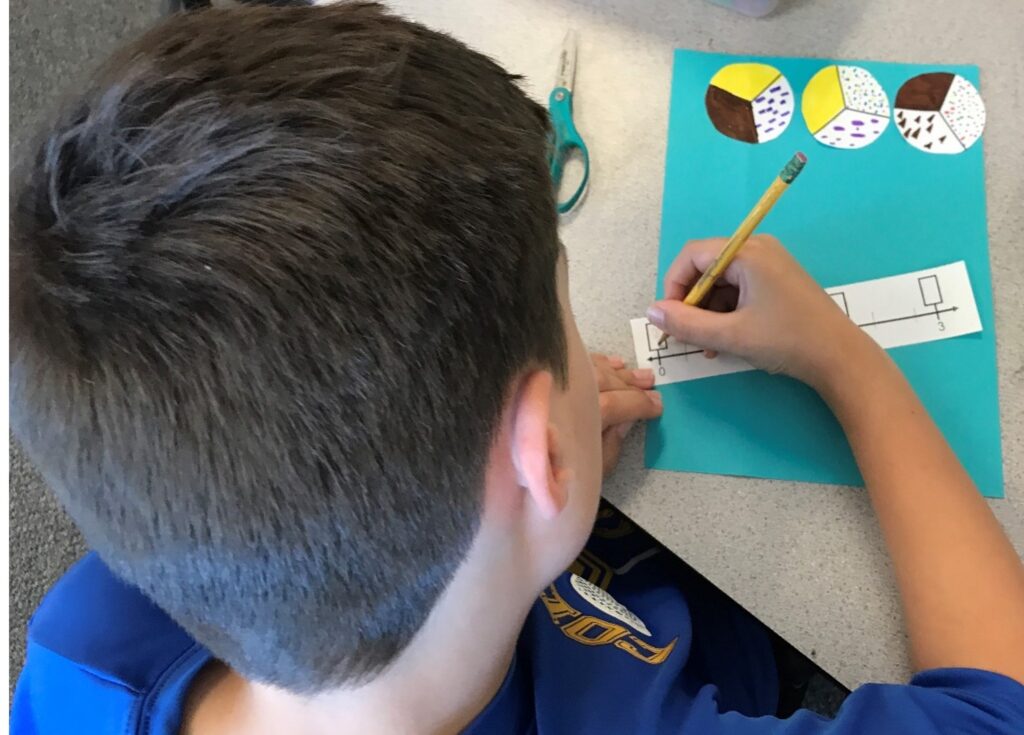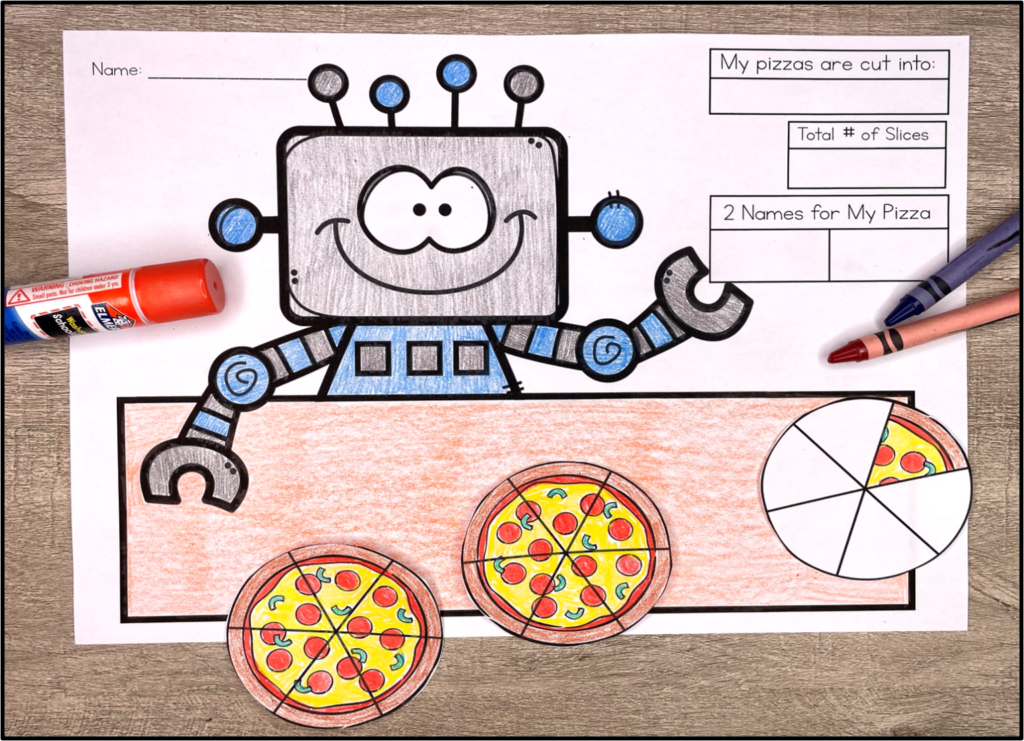Fractions sometimes give teachers, especially newer teachers, the shivers! I remember when I first started teaching third grade, we would spend weeks on coloring in pre-partitioned fraction pictures. We talked about numerators and denominators. We talked about parts of a whole. We talked about part of a group. Then we moved on. NOW that is pretty much all in DAY ONE of the fraction unit! We are comparing fractions, putting fractions on the number line, talking about fractions greater than one, and fraction equivalence.

I promise you that teaching fractions doesn’t have to be scary! The key is to make fractions enjoyable and relatable in the classroom. I have found that you can actually build connections and community in your classroom while teaching fractions!
My main plan is to incorporating real-life examples that students can easily connect with. I act all DRAMATIC and tell my class how tired I am on Friday afternoon. I tell them that I WILL NOT COOK DINNER for my family on Friday. I tell them that we buy pizza of Fridays. This can be used to introduce and reinforce the understanding of fractions less than one whole.
Begin by discussing the idea of sharing a pizza among your family or friends. I talk about each slice we are eating. “So I am a pepperoni person…anyone else a pepperoni person? I eat 2 slides of pepperoni. So good! Then my daughter Harper…she is a cheese lover. Who is a cheese lover? She eats….” My kids are sucked in. Even those kids who typically zone out during math are raising their hand and sharing about their pizza choices.
As students learn to partition the pizza into equal parts, they naturally start grasping the concept of fractions. Over the weeks, as we build understanding, I start to introduce the intriguing concept of buying more than one pizza “I am going to invite my mom and dad over….you know what, maybe I will invite Tommy and his family over too…” This seamlessly leads to the exploration of fractions greater than one whole.
I draw the pizzas on the board, partition them, take suggestions for pizza toppings and number of slices that each person eats. I shade them in. We then take the pizzas and move them over to the number line. This tool can be used to model various fractions and help students visualize the relationship between different fractional values. Starting with the basics and gradually progressing to more complex fractions will help students feel confident in navigating the number line. During our fraction unit, I find that my whole group instruction time can be a little longer than a typical lesson. Taking the time to build up the “story” of fractions in real life is worth the investment. It connects students and brings them into fractions. I might talk about pizzas, pans of brownies, lasagna, and cakes.
To build on their learning and keep it fun, I use fraction crafts during my small group time (and independent work time). Craft activities not only add an element of creativity but also provide a hands-on and enjoyable way for students to interact with fractions. I have developed a set of fraction math crafts that I integrate into the classroom. These crafts not only reinforce the mathematical concepts but also make learning fractions a fun and memorable experience for students.

I encourage you to try out these fraction math crafts in your classroom and observe the positive impact on your students’ engagement and comprehension of fractions. I love to hang them up around the room so that students are submerged in different fraction examples.
How do you like to get your class sucked into teaching fractions?
~Heather











